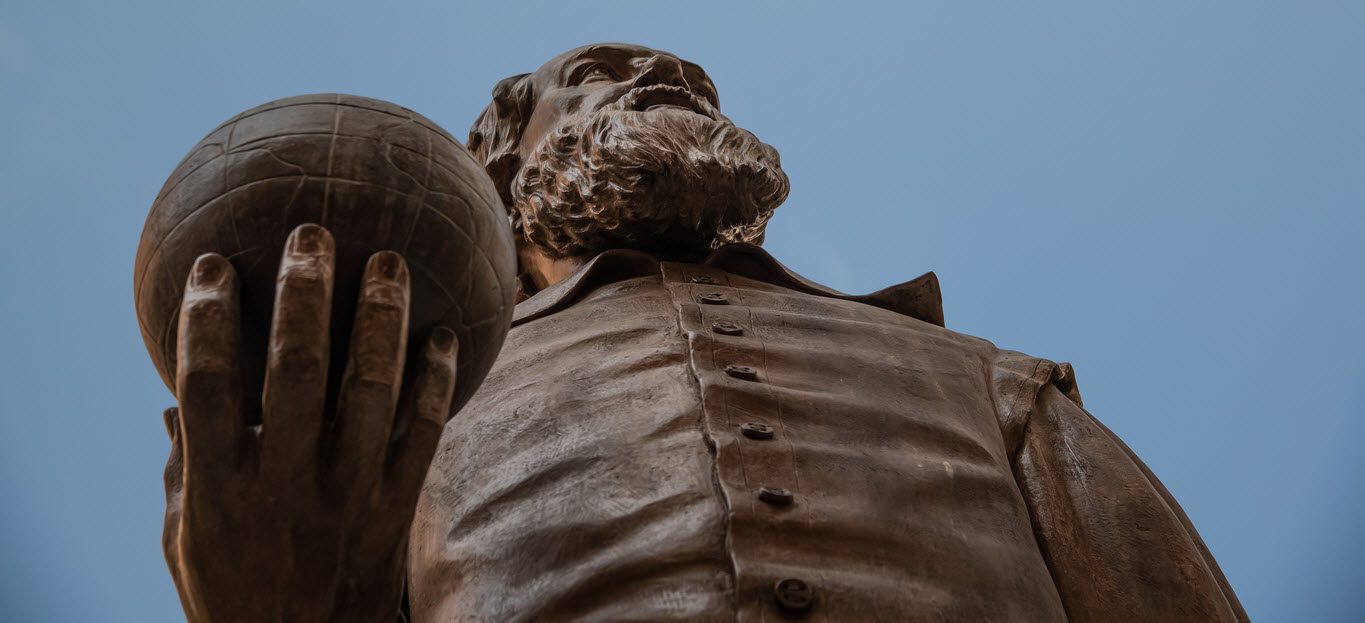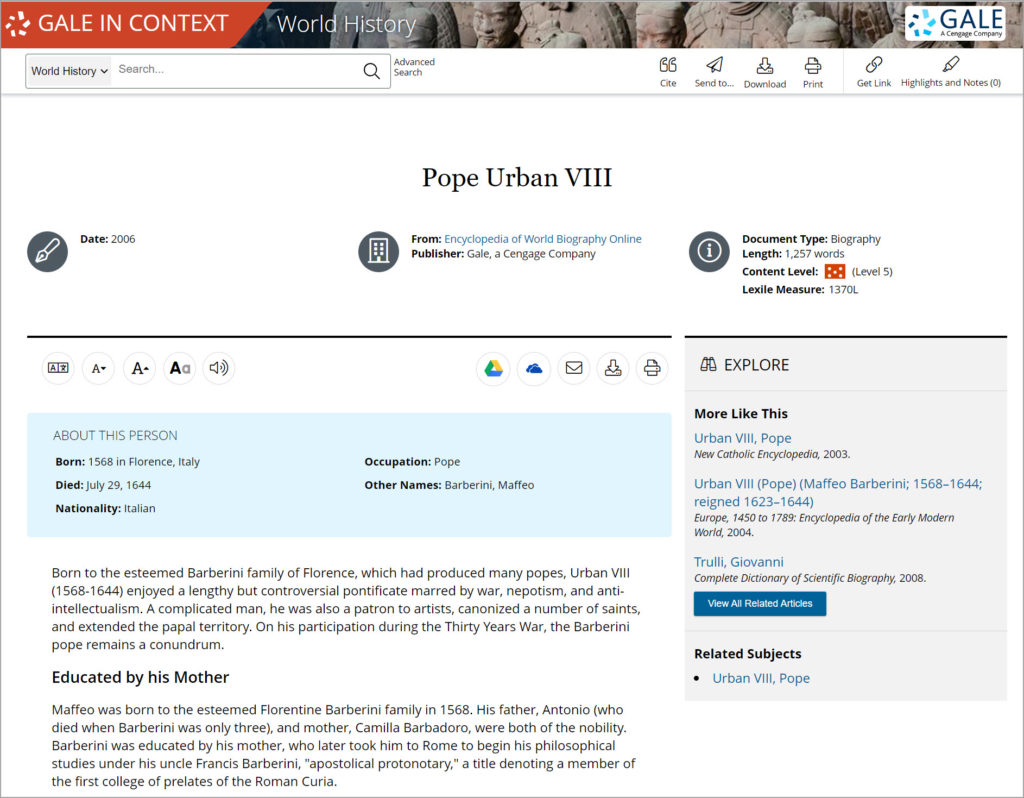Two hundred years ago this week, on September 11, 1822, the Catholic Church formally removed Galileo Galilei’s writings from its Index of Prohibited Books. Despite the fact that Galileo was a devoted Catholic, the conflict between him and the Catholic Church over the view of the sun, and not the earth, as the center of the solar system has often been perceived as one of the classic battles between science and religion. Gale In Context: World History helps students and teachers better understand Galileo’s treatment by the church, with resources that explain the scientific, religious, and historical aspects of Galileo’s work and why the Catholic Church responded as it did.
Galileo was born in Pisa, Italy, in 1564, and his work in mathematics and science began before he was 20 years old. It was his work in astronomy in the early seventeenth century, however, that brought him and the church into conflict. Using a telescope in 1609 and 1610, Galileo gathered evidence about mountains on the moon, some of the moons circling Jupiter, and the stars in the Milky Way. He collected these in a 1610 booklet entitled The Starry Messenger, which changed how people viewed the heavens and brought Galileo into even greater prominence.
Galileo was hardly the first person to argue that the earth revolves around the sun. Nicolaus Copernicus (1473–1543) had argued in The Revolutions of the Heavenly Spheres (completed in 1530 but not published until just before his death) that a heliocentric model best described the motions of the sun, earth, and other planets. This was in direct conflict with the church’s teaching of a geocentric model, which argued that the Bible described the earth as stationary, with the sun revolving around the planet. Because Copernicus died soon after his work was published, he avoided any kind of discipline from the church.
Galileo was not so fortunate. He had described himself as a believer in the Copernican model as early as 1604, and his work in the following years was designed to further and refine that model. He realized, however, that the church would likely not be supportive of any publications that tried to do so. Galileo began to write a series of essays in the form of letters that explored theology and why the Bible didn’t necessarily contradict a heliocentric model. In 1616, however, church authorities officially forbade Galileo from teaching or defending Copernican ideas about the earth moving around the sun.
Later, however, Galileo thought he had found a kindred spirit in Cardinal Maffeo Barberini, who later became Pope Urban VIII. When Galileo was told that Pope Urban VIII felt the Copernican model was rash but not heretical, Galileo believed he had permission to write what would become one of his most famous works, Dialogue Concerning the Two Chief World Systems. He completed the manuscript in 1630, and it was published in 1632.
But later in 1632, Galileo was summoned before the Roman Inquisition to account for how he had disobeyed the church’s mandate that he not defend Copernican ideas. The Inquisition was an institution that was designed to safeguard the teachings of the Catholic Church and to punish heretics. It became more powerful in the sixteenth and seventeenth centuries, in part to stand against the Protestant Reformation. As the Catholic Church felt more embattled, it became more resistant to any kind of argument that seemed to disagree with church doctrine. In 1633, the church forced Galileo to reject what he had written and instead declare that the earth did not move, and therefore did not revolve around the sun. His Dialogue was placed on the Catholic Church’s Index of Prohibited Books.
Despite this decision, Galileo was able to continue teaching, and his works were published throughout Europe. As time went on, the Catholic Church did little outside of Italy and Spain to discourage Copernican ideas; and by the end of the century, Jesuit astronomers were basing their calculations on the Copernican model.
Nonetheless, removing Galileo’s work from the Index took much longer. In 1820, Canon Settele, professor of astronomy in Rome, wrote a book in which he took Copernican ideas as foundational. Church authorities refused to let him publish his work unless he argued that the Copernican model was just a theory and not fact. Settele appealed to Pope Pius VII, who then looked to the Congregation of the Holy Office to decide. When that institution agreed that the Copernican system was foundational, on September 11, 1822, the Holy Inquisition declared that the “printing and publication of works treating of the motion of the earth and the stability of the sun, in accordance with the general opinion of modern astronomers, is permitted at Rome.”
About the Author
J. Robert Parks is a former professor and frequent contributor to Gale InContext: U.S. History and Gale In Context: World History who enjoys thinking about how our understanding of history affects and reflects contemporary culture.


